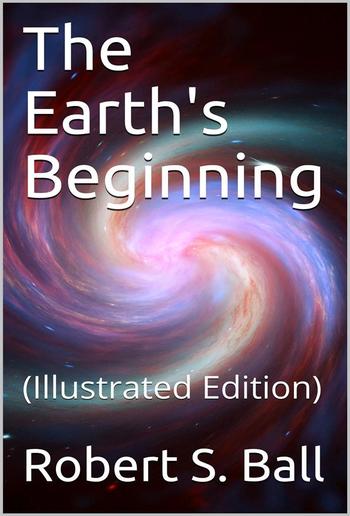
Robert S. Ball - The Earth's Beginning
The Earth's Beginning
Robert S. Ball
Description
Introduction
I TRY in these lectures to give some account of an exceptionally great subject—a subject, I ought rather to say, of sublime magnificence. It may, I believe, be affirmed without exaggeration that the theme which is to occupy our attention represents the most daring height to which the human intellect has ever ventured to soar in its efforts to understand the great operations of Nature. The earth’s beginning relates to phenomena of such magnitude and importance that the temporary concerns which usually engage our thoughts must be forgotten in its presence. Our personal affairs, the affairs of the nation, and of the empire—indeed, of all nations and of all empires—nay, even all human affairs, past, present, and to come, shrink into utter insignificance when we are to consider the majestic subject of the evolution of that solar system of which our earth forms a part. We shall obtain a glimpse of what that evolution has been in the mighty chapter of the book of Nature on which we are now to enter.
The nebular theory discloses the beginning of this earth itself. It points out the marvellous process by which from original chaos the firm globe on which we stand was gradually evolved. It shows how the foundations of this solid earth have been laid, and how it is that we have land to tread on and air to breathe. But the subject has a scope far wider than merely in its relation to our earth. The nebular theory accounts for the beginning of that great and glorious orb the sun, which presides over the system of revolving planets, guides them in their paths, illuminates them with its light, and stimulates the activities of their inhabitants with its genial warmth. The nebular theory explains how it comes about that the sun still continues in these latter days to shine with the brilliance and warmth that it had throughout the past ages of human history and the vastly greater periods of geological time. Then, as another supreme achievement, it discloses the origin of the planets which accompany the sun, and shows how they have come to run their mighty courses; and it tells us how revolving satellites have been associated with the planets. The nebular theory has, indeed, a remarkable relation to all objects belonging to that wonderful scheme which we call the solar system.
Kant’s famous work with which we are now concerned appeared in 1755. In it he laid down the immortal principle of the nebular theory. The greatness of this book is acknowledged by all who have read it, and notwithstanding that the progress of knowledge has made it obvious that many of the statements it contains must now receive modification, Kant’s work contains the essential principle affirming that the earth, the sun, the planets, and all the bodies now forming the solar system did really originate from a vast contracting nebula. In later years Kant’s attention was diverted from these physical questions to that profound system of philosophy with which his name is chiefly associated. The nebular theory is therefore to be regarded as incidental to Kant’s great lifework rather than as forming a very large and important part of it.

